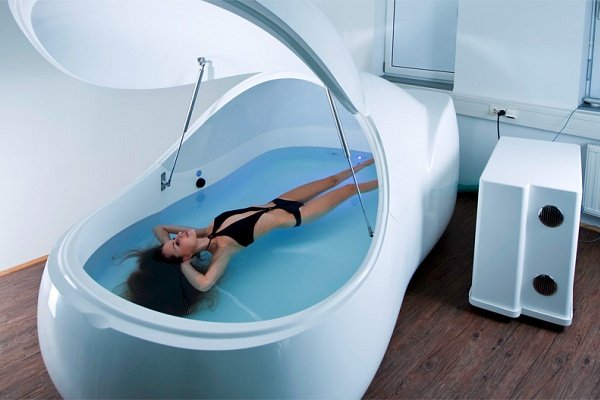24 January 2024, by i-sopod
In the annals of psychological exploration, the 1950s stand as a pivotal era. It was during this time that Drs. Jay Shurley and John Lilly embarked on a groundbreaking journey at the National Institute of Mental Health. Their quest? To unravel the mysteries of the human mind’s response to an environment stripped of external sensory stimuli. Thus, Floatation-REST (Reduced Environmental Stimulation Therapy) was born—a transformative therapeutic technique that has since evolved into a beacon of hope for stress reduction and relaxation seekers alike. Join us as we traverse the historical origins, current advancements, and future promises of Floatation-REST, illuminating its potential clinical benefits across a spectrum of conditions.
Exploring the Depths of Floatation-REST
Immersing oneself in the Floatation-REST experience is akin to stepping into a sanctuary of sensory deprivation—a meticulously crafted space designed to minimize external sensory input to the nervous system. This intentional deprivation encompasses signals from all corners of perception, from the visual to the tactile, from the auditory to the gravitational. The ultimate goal? To create an environment conducive to profound relaxation and stress reduction.
Unveiling the Scientific Discoveries
Scientific inquiry into Floatation-REST has yielded a treasure trove of insights. Numerous publications have delved into its therapeutic benefits, consistently highlighting a significant reduction in subjective stress levels and an enhanced sense of post-float relaxation. Objective measures, including decreased blood pressure, heart rate, and cortisol levels, serve to further substantiate these findings.
A meta-analysis conducted in 2005 underscored a substantial overall effect size for stress reduction, drawing primarily from studies on healthy populations. This suggests that Floatation-REST may serve as a valuable tool for stress management, even among individuals without underlying clinical conditions.
Pioneering Paths in Clinical Research
Though still in its nascent stages, clinical research on Floatation-REST has shown promising results across a spectrum of stress- and pain-related conditions. From hypertension to chronic tension headaches, from muscle tension pain in the back and neck to stress-related pain associated with burnout depression, Floatation-REST has demonstrated largely beneficial effects. Studies have also honed in on clinical anxiety, encompassing disorders such as generalized anxiety disorder, PTSD, anorexia nervosa, panic disorder, agoraphobia, and social anxiety disorder.
Existing evidence supports the safety of Floatation-REST as a technique for rapidly alleviating stress, pain, and anxiety. Ongoing clinical trials in the United States, Germany, and Sweden are currently delving into the long-term impact of floating among individuals grappling with anxiety disorders, anorexia nervosa, chronic pain, fibromyalgia, and insomnia. These trials hold the promise of yielding invaluable insights into the sustained therapeutic effects of Floatation-REST across diverse clinical populations.
Navigating Toward Wellness
Floatation-REST emerges as not merely a therapeutic technique, but a gateway to profound relaxation and holistic well-being. As research continues to unravel its mysteries and clinical trials shed light on its efficacy, the potential of Floatation-REST to alleviate stress, pain, and anxiety shines brighter than ever. So, let us continue to navigate these depths, buoyed by the promise of a calmer, more tranquil existence on the horizon.






